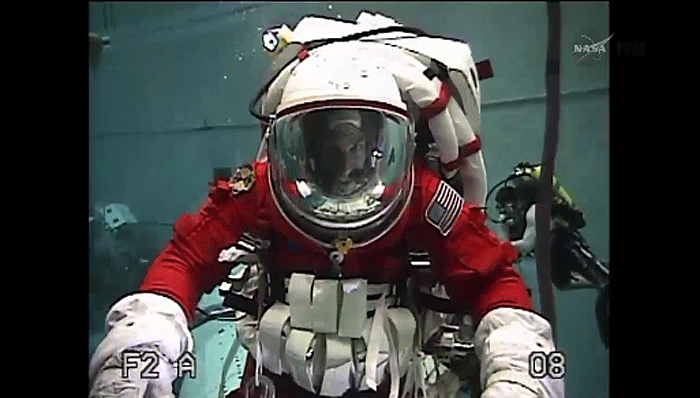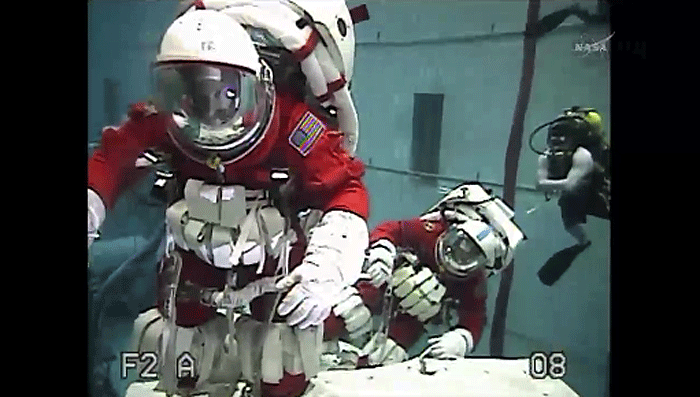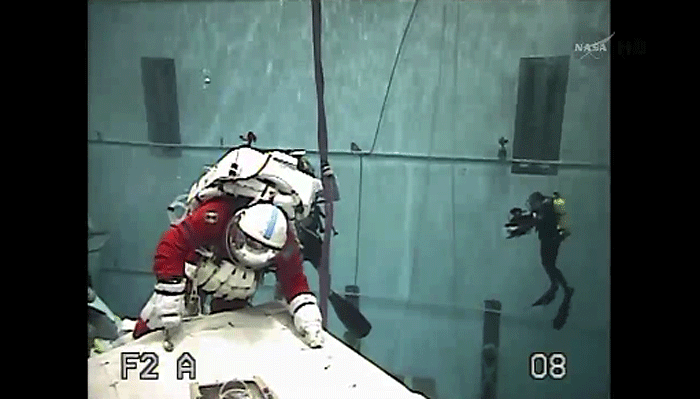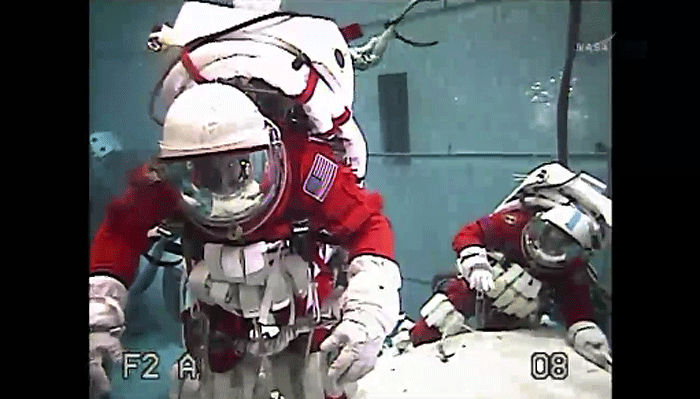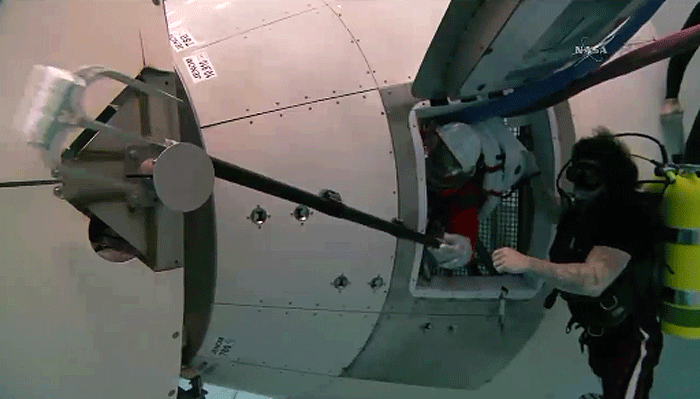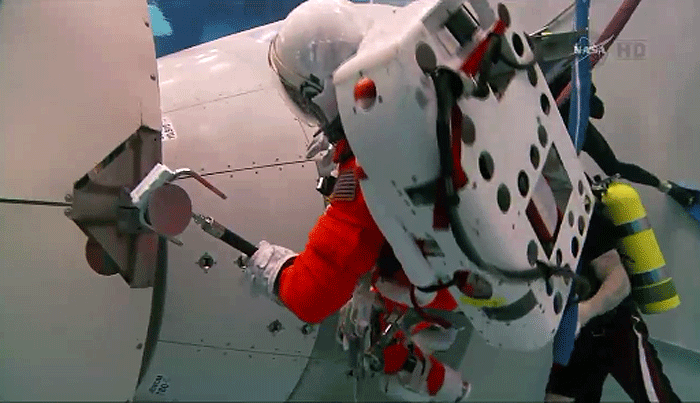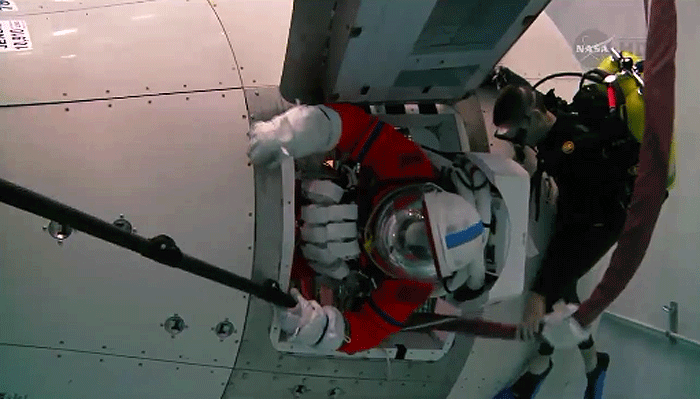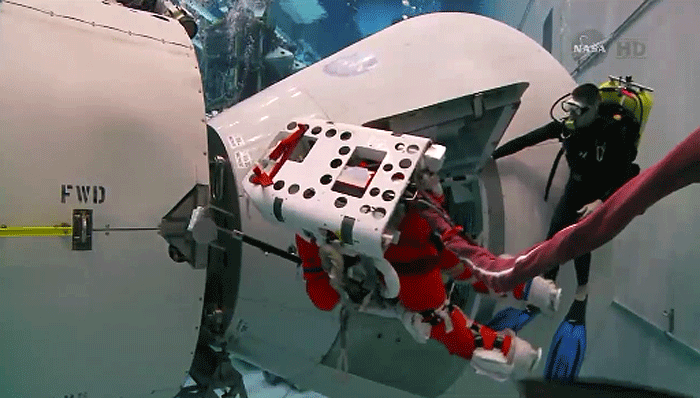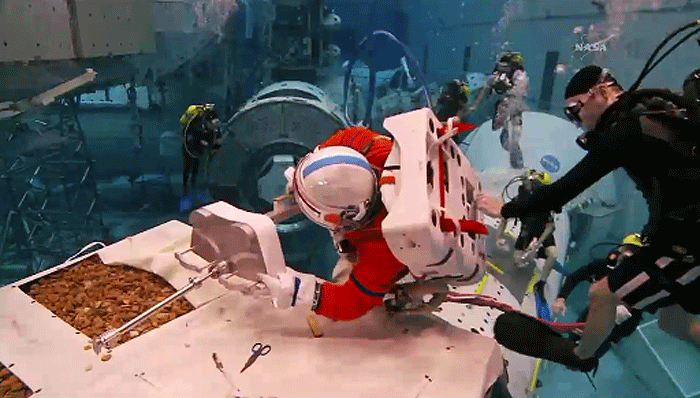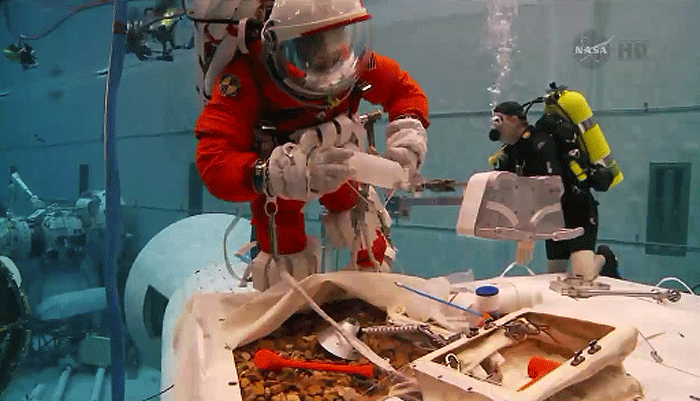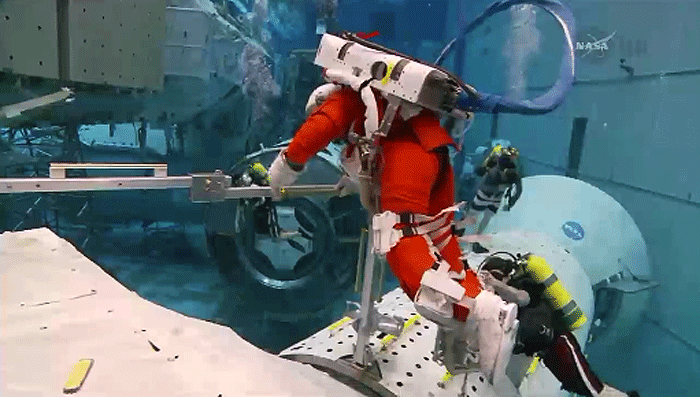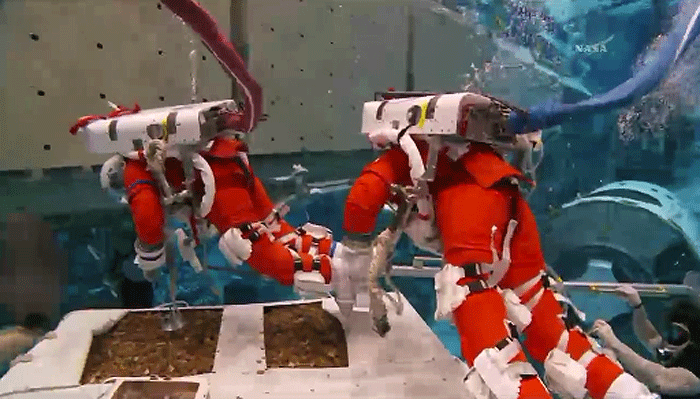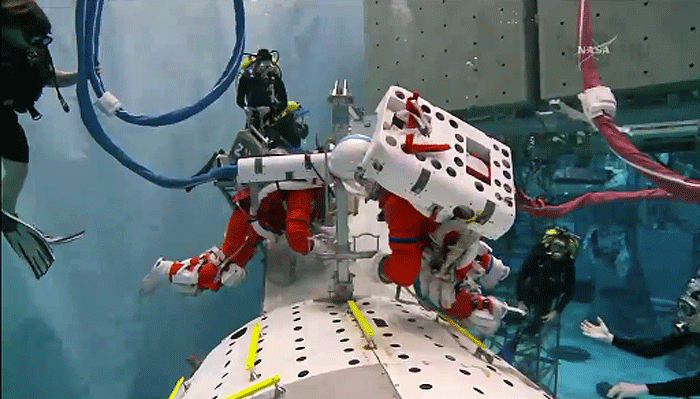.
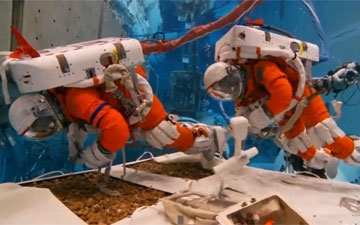
NASA is planning to send astronauts to an asteroid in the 2020s, and preparations are already being made.
Stan Love and Steve Bowen have between them spent more than 62 hours in the vacuum of space on nine shuttle mission spacewalks, and they’re putting that experience to use here on Earth by helping engineers determine what astronauts will need on NASA’s next step toward Deep Space. Wearing modified versions of the orange space shuttle launch and entry suits, the two went underwater on May 9, in the Neutral Buoyancy Laboratory at NASA’s Johnson Space Center, a 40-feet-deep swimming pool that helps provide the lack of gravity needed for astronauts to practice for spacewalks. There a mockup of the Orion spacecraft that will carry astronauts to the asteroid, docked to a mockup of the robotic spacecraft that will be used to capture an asteroid and bring it into a stable orbit near the moon, provided the backdrop for the simulated spacewalk.
“We’re working on the techniques and tools we might use someday to explore a small asteroid that was captured from an orbit around the sun and brought back by a robotic spacecraft to orbit around the moon,” Love said. “When it’s there, we can send people there to take samples and take a look at it up close. That’s our main task; we’re looking at tools we’d use for that, how we’d take those samples.”
For instance, one of the primary goals of visiting an asteroid will be to obtain a core sample that shows its layers, intact – such a sample could provide information on the age of the solar system and how it was formed. But the tools geologist use to collect core samples or even chips of rocks aren’t a good idea in space – swinging a hammer in front of your face isn’t safe when the sheet of glass between you and it is necessary to keep you alive. Instead Love and Bowen tried out a pneumatic hammer to give them a feel for whether a battery-powered version might be useful.
And while they did so, they also evaluated a version of the spacesuit that could be worn on an asteroid. Orion astronauts already needed a launch and entry suit to protect them during the most dynamic phases of their flights. So, rather than add to the weight Orion has to carry into orbit and take up additional space inside the crew module, engineers have been working to turn the shuttle-heritage Advanced Crew Escape Suit – or ACES – into something suitable for spacewalks.
Gloves, boots from the space station spacesuit and bearings to aid in the kind of moves an astronaut would need to do on a spacewalk are giving the modified ACES new life. But they probably won’t be the last of the modifications, and working through some of the tasks the suit will need to accommodate on an asteroid helps the astronauts advise the engineers on what still needs improvement.
“We need some significant modifications to make it easy to translate,” Bowen said. “I can’t stretch my arms out quite as far as in the [space station space suit]. The work envelop is very small. So as we get through, we look at these tasks. These tasks are outstanding to help us develop what needs to be modified in the suit, as well.”
NASA is already working to identify an asteroid that could be reached by a robotic mission to capture it and bring it into a stable orbit around the moon. Once it’s there, the Orion spacecraft and Space Launch System rocket will launch a crew of astronauts to explore it and gather samples. The strategy makes good use of capabilities NASA already has, while also advancing a number of technologies needed for longer-term plans: sending humans to Mars in the 2030s.
.
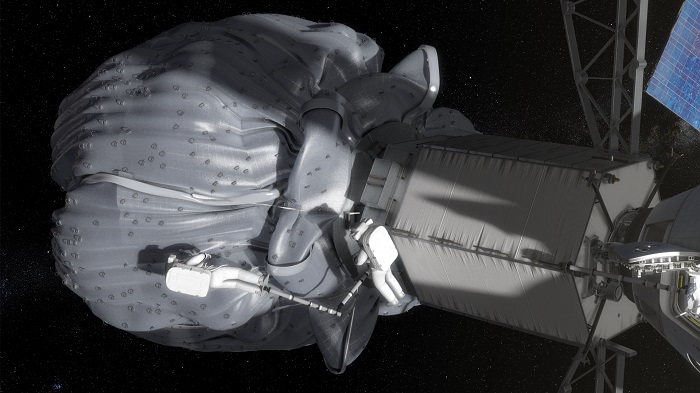
In this conceptual image, the two-person crew uses a translation boom to travel from the Orion spacecraft to the captured asteroid during a spacewalk.
Quelle: NASA
